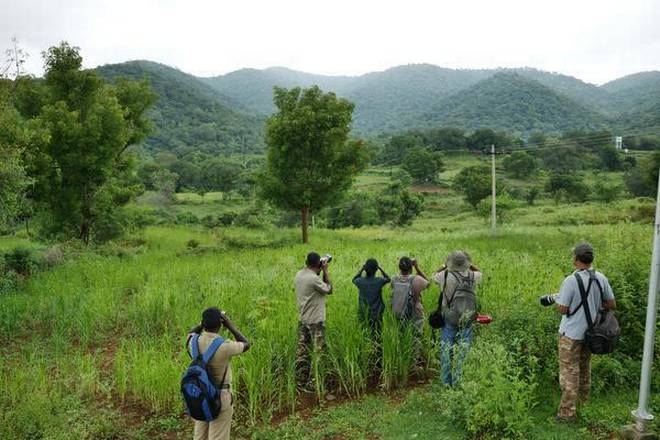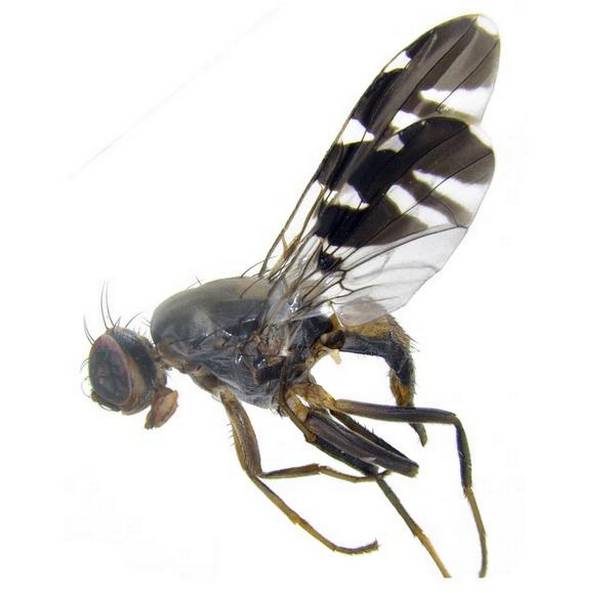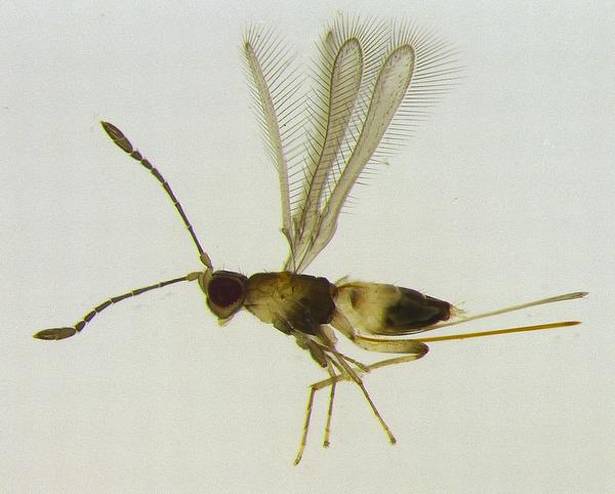Siruvani, TAMIL NADU / Aligarh, UTTAR PRADESH :

A new species of fruit fly discovered for the first time has been named after Siruvani in the Western Ghats
A fruit fly has created a buzz with its maiden show in Siruvani, a biodiversity hotspot of the Western Ghats. It turns out to be a new species that has been reported, named, and documented for the first time ever. The fruit fly is now scientifically named as Euphranta siruvani, after the place where it was first collected.
A research student at Annamalai University, H Sankararaman, first spotted this unusual visitor on a light trap which he had set up to capture moths at a non-forest space near Siruvani. “The fruit fly was attracted towards light and I was lucky enough to have spotted it. It has a distinct V-shaped black band on its forewing,” recalls Sankar.

The discovery now appears in Zootaxa journal in a paper authored by David K J and Sachin, K, ICAR-National Bureau of Agricultural Insect Resources (NBAIR), Bengaluru, DL Hancock from the UK, Sudhir Singh from Forest Research Institute, Dehradun and H Sankararaman from Annamalai University. According to David, there are 104 recognised species in the genus Euphranta that are distributed across the world. “Of this, 14 are recorded so far from India. The discovery of Euphranta siruvani is the brand-new addition to the checklist.”
“This fruit fly is a rare species and a valuable addition to the diversity,” says David K J, scientist at ICAR-NBAIR, one of the National Institutes with several taxonomists of international repute. “We first check with the regional/world catalogue, then refer to available literature, and connect with authorities around the world over mail before confirming it as a new species,” explains David.
A species can be named after the ‘type locality’ (the place from where the holotype was collected), a specific characteristic feature, after the collector or after an eminent taxonomist for his contributions. In this case, they chose the place, a thriving ecosystem of rich fauna and flora and also the source of drinking water for Coimbatore.

Apart from the fruit fly, additionally a brand new fairy fly species was found at Siruvani. The species Omyomymar hayati is named after Professor Mohammad Hayat of Aligarh Muslim University for his contributions to insect taxonomy.
“I have described several species after the type locality for example Acidoxantha galibeedu in 2014 based on specimen collected near Coorg. Later, I had collected the same species from other parts of Karnataka and Kerala. Similarly, may be the E.siruvani can be seen across the Western Ghats and Kerala in South India. We have to study further to understand its distribution,” explains David, who has identified and described 28 new species of fruit flies of India.
The genus Euphranta comprises many fruit/seed infesting species, including Euphranta cassiae that feeds on the pods of Kanikonna (Cassia fistula) trees. “There are 5,000 species of fruit flies across the world. In India, we have nearly 290 species so far; we keep adding to the list.”
K D Prathapan, an expert on beetles, who works at Kerala Agricultural University, says fruit flies have an average lifespan of three to four weeks. “By infesting fruits, they damage the reproductive capacity of plants. Some species breed in bamboo shoots. And then there are cucurbit fruit flies that are pests of cucurbits such as cucumber, gourds, and pumpkins.”
The study of fruit flies is important for the agricultural economy, as they infect mangoes, melons, gourds, and guavas, says Sankararaman. “It lays eggs in fruits and the larvae feed on the pulp. We are yet get insights about the biology of the species discovered in Siruvani.”
K Mohan Prasath, founder of Act for Butterflies, says there are also many parasitic insects that are helpful to farmers in pest control. Mohan and his team have compiled a list of over 1,000 species of moths across Tamil Nadu and plan to bring it out in a book form soon. “We hope such discoveries build interest in entomology that covers insects, butterflies, and moths. Identification of new species is especially relevant now as there is habitat destruction of many species because of climate change.”
source: http://www.thehindu.com / The Hindu / Home> Sci-Tech> Environment / by K Jeshi / January 12th, 2021








